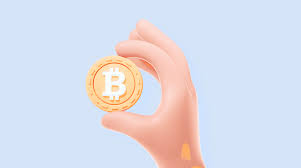Halving will become the poison of BCH? Analysis believes that the halving event next year may cause serious side effects on its network security
As we all know, Bitcoin Cash (BCH) has not been the most widely used cryptocurrency since it was launched in August 2017. There was not much activity on the Internet except for the short-lived bubble that occurred during the “hard fork” period due to the failure of the New York agreement. In fact, according to various indicators, even the Dogecoin network is more active than the Bitcoin cash network.

(Source: pixabay )
There may be more problems with BCH in the future. About a year later, BCH will experience a halving event for the first time, which will have the side effect of weakening cybersecurity. When the block reward is halved, a so-called “half event” occurs, which is part of the monetary policy controlled by Bitcoin (BTC) and Bitcoin Cash (BCH) algorithms.
- He contributed to Bitcoin futures, supported the relaxation of regulation, and now he is retiring.
- IPFS Filecoin related scam analysis of how investors should prevent?
- Daily Twitter View: Wavefield will launch stable currency lightning torch relay coming soon
It is worth noting that the key issues described in this article also apply to Bitcoin SV (from the BCH fork). This article analyzes BCH simply because it is the most famous bitcoin derivative of SHA-256 as its Workload Proof (PoW) algorithm.
BCH issuance rate
When Bitcoin cash was first introduced, it used a new difficulty adjustment algorithm (DAA) to ensure that the network did not experience a sudden brake. A side effect of this new difficulty adjustment algorithm is that the monetary base grows faster than bitcoin because the speed of block mining becomes unstable.
This irregularity on the Bitcoin cash network has led to a sharp decline in Bitcoin computing power, as miners have found that mining on the Bitcoin cash network is more profitable because it actually becomes a faster coin generation. The form of larger cumulative block subsidies. The side effect is that the mining rate of new blocks on the Bitcoin network has slowed down in a short period of time. You can read more details about this special event here.
In the end, the Bitcoin Cash (BCH) network adopted a new, improved difficulty adjustment algorithm that restored their blocks to the originally set 10-minute interval.
Unsafe bitcoin cash becomes more insecure
Next year, Bitcoin Cash (BCH) will face similar problems with Bitcoin in 2017.
Since bitcoin cash (BCH) was issued at a high rate at the beginning of the birth, the network is expected to halve for the first time in more than a month before the next halving of Bitcoin.
It should be noted that block subsidies are only part of the entire block award, and the rest comes from transaction fees.
Under all conditions (transaction fees, prices, etc.), lower block subsidies should result in a decline in security, as the decline in the value of block rewards reduces the incentives for miners to use the power to protect the network.
As SegWit2x has learned from the past, miners chase profits. The share of Bitcoin cash in the various cryptocurrency networks SHA-256 is relatively unsafe, and halving next year may make things worse.

According to fork.lol (at the time of this writing), BCH Miners are expected to receive a $1,970 block award after halving the bonus. Bitcoin miners will receive $32,939 per block after the network has been halved, but as mentioned earlier, there will be a multi-month interval between bitcoin cash and bitcoin halving.
At the current price, miners will still receive a BTC award of $64,471 per block before Bitcoin is halved. This means that the reward for mining on the Bitcoin cash network will be about 3% of the mining revenue on the Bitcoin network.
The above estimates are based on the level of activity of the BTC and BCH networks over the past 30 days. Based on activity estimates over the past 7 days, the BCH block return will be approximately 2.15% of Bitcoin.
It is important to remember that these estimates are based on the state of today's networks. The increase in transaction fees earned by miners on the Bitcoin network (which has happened in the past) will make bitcoin cash a much worse situation.
Obviously, the rise in bitcoin cash prices will help the network be safe after halving. In the past, bitcoin prices have risen as events have halved, but it's important to remember that bitcoin cash is behaving differently than Bitcoin.
Of course, the real problem is not the relative position of the bitcoin cash and the bitcoin network's mining revenue at the time Bitcoin cash was halved. Instead, the fact is that when the block reward for Bitcoin's cash will drop by about 50%, the block reward for Bitcoin remains unchanged for about 40 days (again, under all conditions).
In other words, halving will only make existing problems worse. If someone attacks the Bitcoin cash network, next year may be the best time, depending on the relative mining revenue of the Bitcoin cash network relative to Bitcoin.
We will continue to update Blocking; if you have any questions or suggestions, please contact us!
Was this article helpful?
93 out of 132 found this helpful
Related articles
- From the dollar standard to the currency standard, why is bitcoin a green technology?
- Million yuan! Lightning network logo global collection order, I can get closer to Bitcoin!
- Learn more about IPFS (2/6): What is Interstellar Linked Data (IPLD)?
- An Alternative Perspective of Bitcoin – The Future of Bitcoin
- Medical chain, can health be more secure?
- Billions of dollars flow into Staking activities, these security risks cannot be ignored
- The Samsung Galaxy S10 mobile phone is at risk of being hacked, and the security of the encrypted wallet is questioned.






